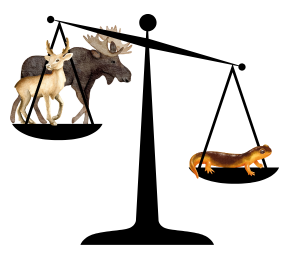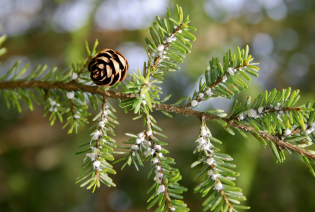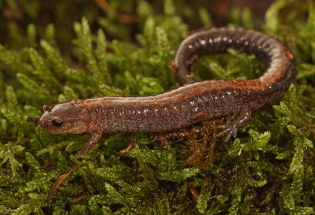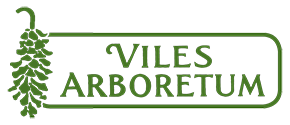The Red-backed salamander can be found in forest habitats throughout Maine. Ranging from 2.5 to 5 inches in length, they are commonly found under leaf litter, rocks, and decaying logs. These amphibians are an indicator species, a living organism that can offer insight into an ecosystems overall health. Their presence, absence, or rapid decline provide important information about the quality of an environment.
 Maine Department of Inland Fisheries and Wildlife estimates that these tiny salamanders are likely the most abundant vertebrate species in Maine and that the “Biomass of this species alone is estimated to be higher than the combined biomass of deer and moose in Maine forests” which basically means if you weighed all the salamanders in the state they would weigh more than all moose and deer in the state combined.
Maine Department of Inland Fisheries and Wildlife estimates that these tiny salamanders are likely the most abundant vertebrate species in Maine and that the “Biomass of this species alone is estimated to be higher than the combined biomass of deer and moose in Maine forests” which basically means if you weighed all the salamanders in the state they would weigh more than all moose and deer in the state combined.
 So why are we putting the spotlight on these unassuming amphibians? And why is their abundance and ability to provide insight into an ecosystem's health matter to us? To answer that question we must turn to another species, this time an insect; the Hemlock Wooly Adelgid. These aphids are an invasive species that targets… you guessed it, the Eastern Hemlock. They are responsible for hemlock decline and mortality across Maine and are a real danger to not only the trees but to the unique ecosystem that relies on Hemlock-dominated stands. Red-backed salamanders are also closely related to the eastern hemlock: the Forests journal article “Do Terrestrial Salamanders Indicate Ecosystem Changes in New England Forests?” analyzed Harvard Forest’s long-term ecological research hemlock removal experiment and found that “red-backed salamanders were strong indicators of intact forests dominated by eastern hemlock”.
So why are we putting the spotlight on these unassuming amphibians? And why is their abundance and ability to provide insight into an ecosystem's health matter to us? To answer that question we must turn to another species, this time an insect; the Hemlock Wooly Adelgid. These aphids are an invasive species that targets… you guessed it, the Eastern Hemlock. They are responsible for hemlock decline and mortality across Maine and are a real danger to not only the trees but to the unique ecosystem that relies on Hemlock-dominated stands. Red-backed salamanders are also closely related to the eastern hemlock: the Forests journal article “Do Terrestrial Salamanders Indicate Ecosystem Changes in New England Forests?” analyzed Harvard Forest’s long-term ecological research hemlock removal experiment and found that “red-backed salamanders were strong indicators of intact forests dominated by eastern hemlock”.
We’ll be monitoring these slippery forest friends this spring at the Arboretum. By surveying red-backed salamanders, we will be providing a snapshot into the health of the arboretum’s hemlock collection.  With the invasion of Hemlock Wooly Adelgid spreading to Maine, it is more important than ever to closely monitor the health of vulnerable hemlock stands. When Hemlock trees are threatened, every species that relies on them is threatened in turn. Looking just at our red-backed salamanders, they are important prey species for snakes, birds, and small mammals. That combined with their immense biomass means that not only the salamanders, but the species that rely on them and every species up the trophic chain are put at risk.
With the invasion of Hemlock Wooly Adelgid spreading to Maine, it is more important than ever to closely monitor the health of vulnerable hemlock stands. When Hemlock trees are threatened, every species that relies on them is threatened in turn. Looking just at our red-backed salamanders, they are important prey species for snakes, birds, and small mammals. That combined with their immense biomass means that not only the salamanders, but the species that rely on them and every species up the trophic chain are put at risk.
Red-backed Salamander Monitoring at Viles Arboretum: Join us for one of our weekly monitoring sessions. You’ll have an opportunity to learn how to identify salamander species and handle them safely, while helping us to record helpful scientific data.
Sources: Siddig AAH, Ochs A, Ellison AM. Do Terrestrial Salamanders Indicate Ecosystem Changes in New England Forests? Forests. 2019; 10(2):154. https://doi.org/10.3390/f10020154

